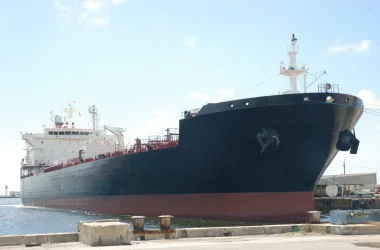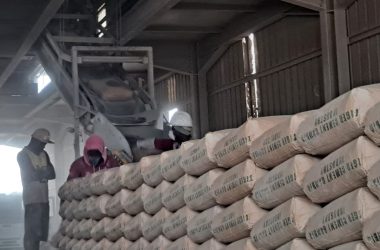By Robert B. Zoellick
In the wake of the devastating earthquake, there has been an outpouring of international support for Haiti. The first priority has been saving lives. That means getting water, food, shelter, medicine and other basic supplies to victims. The first rush must be backed up by an ongoing logistics chain that will need to function for many months. But even as we stabilize the humanitarian response, we need to turn to the delivery of basic services and reconstruction. As we do so, we must learn the lessons of the past. After five peacekeeping missions and billions of dollars in aid, Haiti remains a country with some of the worst human development indicators in the world. Yet we know that progress is possible. Before the hurricanes in 2008 and again before this month’s earthquake, Haiti had been moving forward with successful and peaceful elections, stabilization of chronic insecurity, and increased revenue collection and investment. Building on these successes, Haiti’s reconstruction and recovery require long-term commitment. When the cameras depart — as they are already beginning to do — donors must not depart with them. In the past, “Haiti fatigue” has been as great an impediment to development as natural disasters. The four hurricanes and tropical storms of 2008 did damage equivalent to about 15 percent of gross domestic product. The cost of the quake will almost certainly be larger and require a more sustained and coordinated effort. What are the lessons we need to learn? Haiti can’t be reconstructed by well-meaning outsiders. Donors must work hand in hand with the Haitian government and people. And the government and parliament must show leadership and a commitment to work together.
Donor support for reconstruction should be in the form of grants. More money must go through the budget so it can be linked to Haitian goals and building Haitian capacity, even if the early stages of work depend on actions by regional and international partners. We must remove Haiti’s debt burden. Last year, with the International Monetary Fund, the World Bank canceled $1.2 billion of debt. But almost $1 billion in debt remains. Less than 4 percent of this — about $38 million — is owed to the World Bank. We immediately announced that no debt repayments would be due for the next five years, and we are working to cancel all remaining debt owed to us. Others should follow suit. We need better coordinated aid; fewer feel-good donor projects; less flag-planting and strong oversight, transparency and accountability to instill confidence that the money will be used effectively. Rebuilding Haiti better requires common sense and strategy. We can support the transition from humanitarian aid to reconstruction through food or cash-for-work programs, so Haitians can be paid for clearing and rebuilding infrastructure and planting trees. Community projects can improve conditions for small-scale farming, which over time can supply and then replace food assistance programs. With modest investments in supplies and equipment, Haiti can build labor-intensive construction businesses. Repeatedly hit by natural disasters, Haiti has been cursed by its geography. But geography could be Haiti’s strategic opportunity. Six hundred miles from the United States, Haiti has enormous potential. With access to the U.S. market through the HOPE II Act, Haiti can create jobs in its apparel and agriculture sectors. It can promote its private sector by creating an enabling environment for investment and building the infrastructure of power grids, ports and roads. We’ve already seen successes. Our private sector arm, the International Finance Corporation, has invested in Digicel, transforming cell phone coverage. A free-trade zone near the border with the Dominican Republic has attracted American apparel companies, creating thousands of jobs. There are opportunities to scale up other zones. Legitimacy, security and development must go hand in hand if Haiti is to prosper. Television viewers now understand how weak the Haitian state has been. This encompasses not just a lack of heavy equipment to move rubble but also a small police force, a thin judiciary and a state with little capacity or revenue to protect its people or deliver basic services. We need to “secure development” with roots deep enough to break the cycle of fragility, poverty and violence. With political stability, security and effective government, investments and development can grow.
We have the example of Aceh, Indonesia, to guide us. Today, five years after the Asian tsunami, Aceh reconstruction is recognized as a success story: 140,000 houses have been rebuilt, 2,500 miles of roads constructed and 200,000 small and medium-sized enterprises supported.
In Aceh, international partners supported reconstruction through coordinated approaches that were aligned behind government leadership and local priorities. Fifteen donor countries and organizations pooled $700 million in a multidonor fund that was administered by the World Bank. Instead of 15 separate housing and road projects with different procedures and criteria, which would have overwhelmed the limited capacity of local institutions, one well-coordinated program was implemented by communities, government agencies, nongovernmental agencies and international agencies. Haitians don’t want to be victims any more than we would. With strong Haitian leadership and coordinated, consistent and efficient regional and international support, we can transform days of disaster stories into a decade of success stories.
Robert B. Zoellick is president of the World Bank Group.
Trending :
- 1 day ago
- Darboe Accepts Bensouda’s Resignation, Calls For Unity Within UDP
- 1 day ago
- Editorial | Mayor Bensouda’s Exit: A Moment Of Reflection For The UDP
- 1 day ago
- UDP Completes First Phase Of Flagbearer Vetting, Prepares For Nationwide Consultation
- 1 day ago
- Mayor Bensouda Quits UDP Leadership, Drops Flag Bearer Bid
- 2 days ago
- Ex-Finance Minister Sanneh Blames Government’s “Inflationary” Policies For Economic Woes




